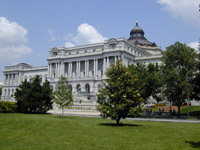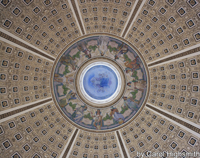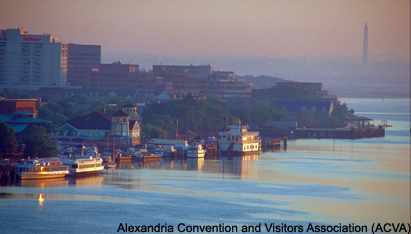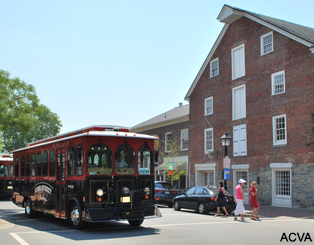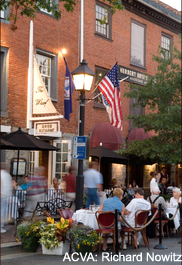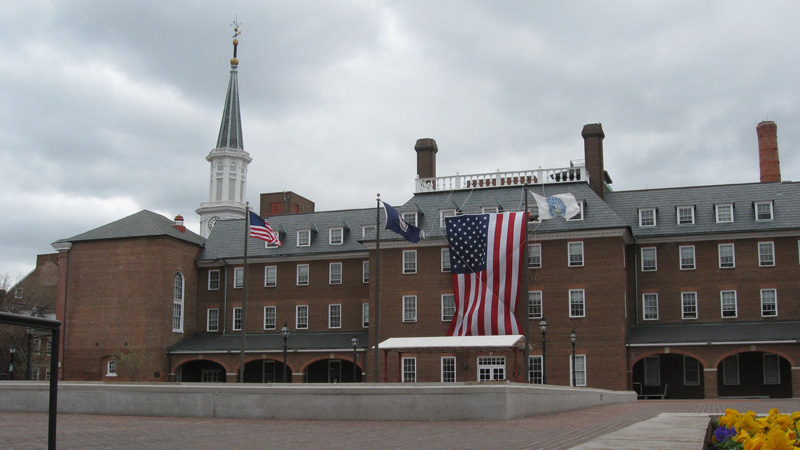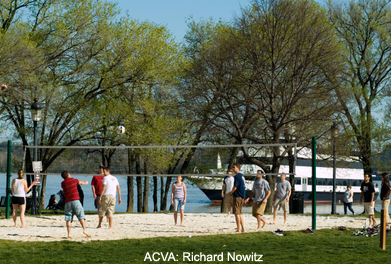Adventures at the Library of Congress
This post is part 5 of our Wednesday Adventure Series. Each week we will highlight something different in the Washington, D.C., Metro Area, many of which will be options for part of your own BookCrossing Journey. With so many things to see and do, how will you choose?
Reminder: There’s a little over a month left to register for the convention before prices rise. Hotel rooms are selling out quickly; some nights are already sold out. Reserve now to avoid disappointment!
We like to think of BookCrossing as the World’s Library. During the 2011 BookCrossing Convention, the World’s Library will meet the world’s largest library when BookCrossers have a chance to tour the Library of Congress in Washington, D.C.
With an ever-growing collection of more than 144 million items, including more than 33 million books and other printed materials in 460 languages, the Library of Congress is, indeed, the largest library in the world. An agency of the federal government, the Library is the research arm of the U.S. legislature and a resource for schools, libraries, publishers, and researchers throughout the world. Some of the collection is available online at http://www.loc.gov.
Congress established the Library in 1800 with a budget of $5,000 for buying books. It was housed in the Capitol until 1814, when the invading British army burned the building and pillaged the collection. Soon afterward, retired U.S. President Thomas Jefferson stepped in to offer his personal library – one of the best collections in America – as a replacement. Jefferson, who once wrote, “I cannot live without books,†had developed a unique cataloging system for his own books, different from the Dewey Decimal System that is more familiar to many readers. Today’s Library uses both systems when it creates cataloging records that are used by libraries around the world.
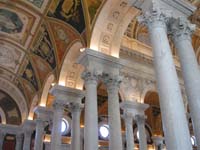 The copyright law of 1870 expanded the collection by requiring copyright applicants to send the Library two copies of each work. The resulting flood of books, pamphlets, music, prints, and photographs overflowed its space in the Capitol. So in 1897, the Library moved to its own building, the gorgeously decorated Thomas Jefferson Building, built in the Italian Renaissance style.
The copyright law of 1870 expanded the collection by requiring copyright applicants to send the Library two copies of each work. The resulting flood of books, pamphlets, music, prints, and photographs overflowed its space in the Capitol. So in 1897, the Library moved to its own building, the gorgeously decorated Thomas Jefferson Building, built in the Italian Renaissance style.
Most tours today focus on the Jefferson Building, but the Library now has two other locations on Capitol Hill – the John Adams Building and the James Madison Memorial Building – as well as off-site facilities.
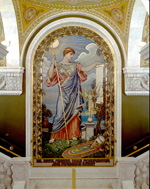 Visitors to the Library can gape at the elaborate art and architecture of the Jefferson Building. Interestingly, almost all historical figures depicted in the artwork are men, while almost all of the mythical and allegorical figures are women. The building’s original gas lighting fixtures, a novelty in their time, are still in use but have been converted to electricity. A Gutenberg Bible and other priceless books are on display under glass in climate-controlled cases, their pages turned regularly to keep any single spread from fading unduly.
Visitors to the Library can gape at the elaborate art and architecture of the Jefferson Building. Interestingly, almost all historical figures depicted in the artwork are men, while almost all of the mythical and allegorical figures are women. The building’s original gas lighting fixtures, a novelty in their time, are still in use but have been converted to electricity. A Gutenberg Bible and other priceless books are on display under glass in climate-controlled cases, their pages turned regularly to keep any single spread from fading unduly.
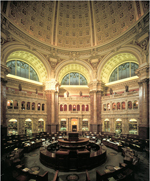 Visitors are not allowed to check books out of the library. But serious scholars can arrange to do research in the magnificent Main Reading Room and other reading rooms at the library, where staff will bring them books and other materials. Visitors can survey the grandeur of the Main Reading Room from a balcony overlook.
Visitors are not allowed to check books out of the library. But serious scholars can arrange to do research in the magnificent Main Reading Room and other reading rooms at the library, where staff will bring them books and other materials. Visitors can survey the grandeur of the Main Reading Room from a balcony overlook.
When you tour the Library of Congress, don’t forget to look up. The decorated ceilings inside the Jefferson Building are beautiful. And beneath the main floors, in underground tunnels that connect the buildings of the Capitol complex, conveyor belts run overhead. The conveyor belts carry books to their destinations. But books aren’t the only ones that can hitch a ride. A small “train†runs through some of the tunnels, carrying employees and visitors to and from the Capitol. And a new tunnel connects the Library to the new Capitol Visitor Center.
In addition to providing services to researchers, legislators, and libraries, the Library of Congress hosts special events. Many author talks, concerts, lectures, and traveling exhibits are open to the public. The annual National Book Festival attracts thousands of visitors who come to buy books, meet their favorite authors, learn about literary resources throughout the country, participate in book-related activities, and yes, share their love of reading by wild-releasing books all over the National Mall.
A guided tour of this amazing library is one activity you can choose during the 2011 Convention, either early on Friday morning or on Saturday. Tour size is limited to only 60 participants, so be sure to visit the Add-Ons and sign up for it today. If you prefer, you can take a self-guided tour at any time, using the tour pamphlets and interactive video terminals throughout the library.
Adventures in Old Town Alexandria
This post is part 4 of our Wednesday Adventure Series. Each week we will highlight something different in the Washington, D.C., Metro Area, many of which will be options for part of your own BookCrossing Journey. With so many things to see and do, how will you choose?
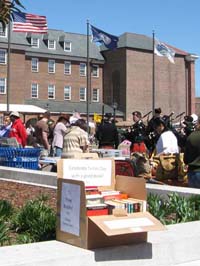 The town of Alexandria was founded by Scottish merchants in 1749 and was a major port on the Potomac River during colonial times, located directly across the river from Washington, D.C. Today it is one of America’s most historic destinations, rich with 18th and 19th century architecture, shops, attractions, and history. Old Town Alexandria is centered on King Street, roughly bounded on one side by the river and the other side by the George Washington National Masonic Memorial.
The town of Alexandria was founded by Scottish merchants in 1749 and was a major port on the Potomac River during colonial times, located directly across the river from Washington, D.C. Today it is one of America’s most historic destinations, rich with 18th and 19th century architecture, shops, attractions, and history. Old Town Alexandria is centered on King Street, roughly bounded on one side by the river and the other side by the George Washington National Masonic Memorial.
 Old Town Alexandria was the third historic district to be placed on the National Register of Historic Places. Some of its attractions include Gadsby’s Tavern (frequented by Thomas Jefferson), Robert E. Lee’s boyhood home, a replica of the townhouse George Washington had in Alexandria, the Lyceum history museum, and the Athenaeum art gallery. Alexandria’s significance during the American Revolution and the Civil War can be seen on practically every street when walking around the town in the forms of large statues and buildings to tiny plaques.
Old Town Alexandria was the third historic district to be placed on the National Register of Historic Places. Some of its attractions include Gadsby’s Tavern (frequented by Thomas Jefferson), Robert E. Lee’s boyhood home, a replica of the townhouse George Washington had in Alexandria, the Lyceum history museum, and the Athenaeum art gallery. Alexandria’s significance during the American Revolution and the Civil War can be seen on practically every street when walking around the town in the forms of large statues and buildings to tiny plaques.
The area is now primarily known for its history and its great shopping and dining. There are some wonderful restaurants, cafes, chic boutiques, antique stores, and of course bookstores! There are more than a hundred and fifty shops and restaurants to choose from.
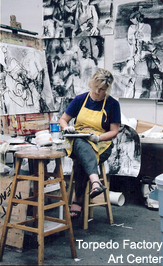 Traveling to and within Old Town Alexandria is easy. The King Street Metro Station is on the blue and yellow lines and the free King Street Trolley runs from the Metro station all the way down to the waterfront and back. There are also river cruise boats, buses, several large parking garages, and street parking.
Traveling to and within Old Town Alexandria is easy. The King Street Metro Station is on the blue and yellow lines and the free King Street Trolley runs from the Metro station all the way down to the waterfront and back. There are also river cruise boats, buses, several large parking garages, and street parking.
The Mount Vernon Trail, a popular walking and bike path, parallels the river. An old US Naval torpedo factory is situated at the waterfront. After the factory closed in 1945, the Smithsonian Institution and Congress stored items and documents there. It was renovated in the 1970s and reopened in 1983 as the Torpedo Factory Art Center, housing artists’ studios, shops, and an archeology museum with artifacts from the area dating back to 2,500 BC.
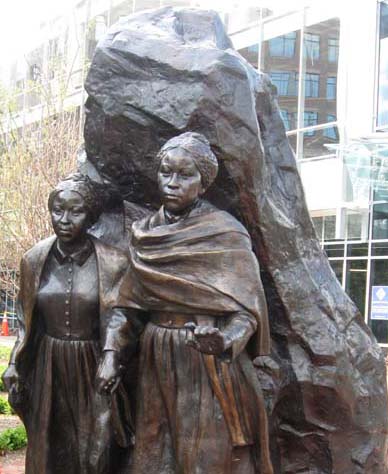 Market Square, the unofficial center of Old Town, is the oldest continuously operating marketplace in the United States and the site of the Alexandria City Hall. It was also once the site of the second-largest slave market in the US. Given all its history, it is not surprising that Alexandria was also important to the anti-slavery movement, with figures such as Edward Stabler, the Edmonson sisters, and Samuel W. Tucker.
Market Square, the unofficial center of Old Town, is the oldest continuously operating marketplace in the United States and the site of the Alexandria City Hall. It was also once the site of the second-largest slave market in the US. Given all its history, it is not surprising that Alexandria was also important to the anti-slavery movement, with figures such as Edward Stabler, the Edmonson sisters, and Samuel W. Tucker.
Here are your convention planners’ favorite parts of Old Town Alexandria:
- authorauthor- I love the Torpedo Factory. You can stroll from studio to studio, looking at the paintings, textile work, stained glass, pottery, jewelry, sculpture, and more, and you can buy directly from the artists. Step out the back and you’re on the boardwalk, where you can see street performers, boats, and a great view of the bridge.
- crrcookie – I have always enjoyed the free King Street Trolley. It gives me the freedom to walk when I choose and know that I will always be able to ride back to the King Street Metro Station if I (or lilgrovers) get tired.
- KateKintail- My favorite spot is a toss-up between two shops: the Scottish Merchant—an adorable little store with a wide selection of Scottish regalia, music, books, and other Celtic items—and the Christmas Attic—an amazing 3-story store packed full of ornaments, village scenes, and collectibles for all seasons.
- mdm139- I love the small park near the marina. It’s a great place for a picnic. I get to watch the boats and planes and my son, T-train, gets to run around.
- melydia- My favorite place is the Old Presbyterian Meeting House burial ground. It’s a Revolutionary War cemetery, with graves literally lining the walkways – and a playground at one end. I love the strange coexistence of youth and death.
Want to explore Old Town Alexandria while you’re here for the convention? You’re in luck, because you have three chances to visit it! We will have a trip to Old Town Alexandria on Friday afternoon for all early birds. This will include a ride on the free King Street Trolley, strolling along the waterfront, visiting the Torpedo Factory Art Center, and shopping near Market Square. On Sunday, one of the activities you can choose is to go on a special tour and release walk hosted by none other than our very own BookCrosser, ResQgeek. And for those BookCrossers sticking around after the convention, the hanger-on dinner Sunday evening will be in Old Town Alexandria as well, but the dinner is limited to the first 100 attendees who sign up so reserve your spot now!
Update on Convention Registration & Hotel Rooms
We’ve got some news to share with you about convention registration and hotel room availability.
First, we realize that paying the full registration amount of $150 all at once may be hard for people and we would like to help by offering you a payment plan. You will need to contact BCinDC directly for more information. Reminder: there are only 45 more days to register before rates increase.
Second, hotel rooms at the Sheraton are going quickly. To avoid disappointment, reserve yours today. To clarify a few points: no deposit is required but you will need a credit card to hold your reservation. The rate of $99 a night is only valid while rooms are available. Rooms are already sold out for April 13, though the majority of rooms BCinDC reserved in our block were for the nights of April 15 & 16. Also, if you have already booked your rooms and you have two separate reservation numbers, please call the Sheraton immediately and have them combine that into a single reservation number, otherwise you may have to move from one room to another during your stay.
Meetup: Museum Hopper Trial Run
On Sunday, November 7, members of BCinDC met in Washington, D.C., to do a trial run of the Museum Hopper activity that will be just one part of the 2011 Convention. We managed to make it to all of the items in a dozen different museums/locations and had time to visit a gift shop or two as well. We’re pleased now to be able to call it the Literary Museum Hopper activity!
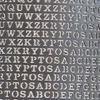
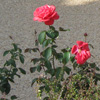
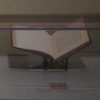

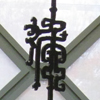
Find out what these are when you attend the convention in April!
BookCrossers KateKintail, mdm139, Rock-Solid, and T-train were in attendance. We plan to have another trial run of this activity in the spring before the convention.
Recent Newsletter Article about BCinDC
The last BookCrossing newsletter featured an article written by melydia about our July BCinDC meetup in Silver Spring, MD. Check out the article, Silver Spring Snafu, for some adventures in BookCrossing event planning!
You can find a collection of articles about BookCrossing in this area or by members of BCinDC on the Articles page of our website.





